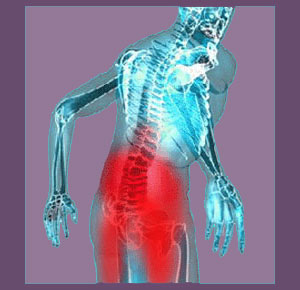
Do you suffer piriformis pain in certain positions? You are not alone. Many patients report worsened pain during particular activities. Standing, sitting, driving, walking, running, reclining and crouching are all notable examples of anatomical postures that might exacerbate piriformis pain conditions.
Why is pain worse when the body is positioned in specific ways and relieved when the position is changed? Can position really make that much of a difference to a structural pain syndrome? How about the effects of position on nonstructural pain syndromes?
This article seeks to answer these questions for the benefit of patients who suffer positional-related piriformis symptoms. If you have pain that worsens when standing, sitting or any assuming any other position, then this is the right topic for your research needs.
Upright Piriformis Pain in Certain Positions
For some patients, being upright on their feet is the worst position in terms of pain aggravators. Standing pain is usually a primary impediment to physical vocations and can be very disruptive to living an active lifestyle. These patients might suffer any or all of the following positional-related pain conditions:
Standing piriformis pain is caused by periods of static upright posture without walking. Some people must stand in one place to work and for these individuals, this condition can limit productivity and cause daily suffering of a terrible magnitude.
Walking piriformis pain is aggravated by normal or excessive walking, especially on hard surfaces. Some patients can not walk for long, while others can barely walk at all.
Running piriformis pain might prevent athletes from performing to their ability or at all, depending on the severity of the expression.
Seated Piriformis Pain in Certain Positions
Other patients might suffer their worst pain when sitting down to work, eat, relax, socialize, spectate or travel. These patients must pick and choose their activities based on the preferences of their pain, rather than what they truly want to do in life:
Sitting piriformis pain might occur in all scenarios or just in some. Common exacerbating factors according to patient citations for sitting positional pain include hard chairs, long periods of sitting, sitting with a wallet or other object in the back pocket, sitting without the ability to place some weight on the floor and sitting with the legs crossed.
Driving piriformis pain is very limiting professionally and personally. Many patients find using their legs while sitting is the main escalating factor to their symptoms, preventing them from driving without a marked increase in symptomology.
Other Types of Piriformis Pain in Certain Positions
There are other possible positional piriformis pain syndromes which are seldom seen, but can be problematic for particular individuals:
Reclining pain is very rare and is almost always found in people who sleep on their back. However, for sleepers who are ingrained in this posture, the effects can be devastating, depriving patients of much needed rest and creating the ideal circumstances for a variety of negative health issues to occur.
Crouching piriformis pain is actually rather common, since kneeling and crouching can play excessive pressure on the compromised region. Luckily, most people do not need to assume these postures often, if at all. For people who must crouch or kneel regularly (such as mechanics or technicians), these position-related symptomatic aggravators can become problematic very quickly.
Positional pain can influence anatomical pain, as well as psychogenic pain, since it can function as a true exacerbator of structural problems or an ideal mindbody trigger or conditioned response.
Piriformis Pain > Causes of Piriformis Pain > Piriformis Pain in Certain Positions





